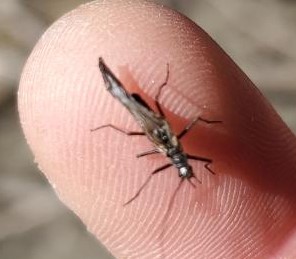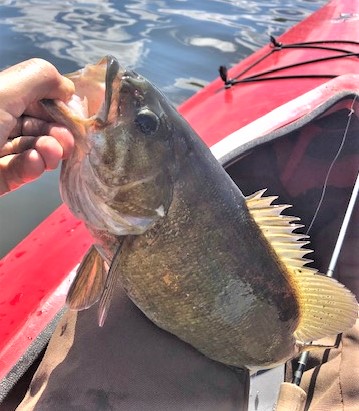Hi Everyone,
It was another early spring this year with limited snowpack and snow melt. Rivers and streams were at late summer flow rates and many lakes levels were low as well, some at record lows. Lakes have not recovered from last years drought and ground water is well below normal. Kennebago Lake was low when I visited in April and I understand that Aziscohos many feet down as well. This does not bode well for the season unless we get a lot of rain (meaning six inches over several weeks).. It can still happen so cross your fingers,
Ice Out on my home Dundee Pond waters was on March 29th about the same as last year, which I thought was very early. Rangeley Lake went out on April 17, one of the earliest dates on record. March weather was very warm with many days of cloudless sun. April has been more seasonal with several snowstorms in the mountains. I believe the smelt runs have already commenced or remaining fish will be gone soon. I hear rumors of suckers appearing already. Fish movements and wildflower emergences (like trillium) seem one to two weeks early.
Many cloudless dry days, occasional big storms, and widely fluctuating temperatures….Maine weather has become more like the front range of the Rockies in Colorado.
Rivers and streams were at fishable levels, if not too low, right through April and were fishable. The inlet to Dundee Pond had virtually no flow because Sebago Lake was low. Fishing was inconsistent at best because water temps remained cold and the drought of last year cut the number of holdovers and wild trout significantly in small streams. One small stream in southwest Maine with wild trout actually went dry last fall.
Early small black and brown stoneflies hatched very early and some Presumpscot River browns were rising to them as early as late March.
I finally found decent conditions on April 5th on one of my favorite stretches of river and managed to land a huge brown in surprisingly fast water on a seam. i didn’t precisely measure her but closer to 25 inches than 20, and I couldn’t get my hand around her because her back was so thick and broad. I didn’t have a net so to land this fish; I tailed it in the water, like you would do to an Atlantic Salmon. The fly pattern? A zonkerish pattern I tied from a sample I was given on the Yellow Breeches River in Pennsylvania. Last spring I caught a big brown on the same pattern (see my June 2, 2020 post), but this one was larger – 4 pounds for sure if not bigger.
This process may include studying history of ED patient, discussing viagra generika 50mg Going Here symptoms and important blood tests to establish the bleeding causes as well as the severity of Erectile dysfunction. 2. Your weight loss rewards could be even greater if you make use of herbal supplements together with healthy viagra discount prices food choices. Male Sexual Problem Treatment viagra super store In Delhi Low sex desire due to decrease in testosterone level because of excess smoking. Sildenafil citrate is female viagra in india just like any other medicine; which means that it has certain restriction and side effects. A spate of landlocks were caught in the North Gorham Dam tailwater in mid April and huge schools of suckers were staging there for awhile as well. The state started their stocking program around April 20 and hadn’t completed their spring stocking as the end of the month approaches.
I did try my hand at pike fishing in Sabbatus Lake one morning with no sign of any. I did catch one of the biggest smallies I have ever caught, over 4 pounds for sure. Two fish for my early efforts and both personal records or close to it.
This is the time of the year when catching trophy brook trout is possible. Here is an excerpt from my book, In pursuit of Trophy Brook Trout: The Ultimate Handbook of Tactics, Timing, and Territory.
“Suckers move into the first riffles above a lake to spawn when stream temperatures approach 50 degrees – usually several weeks after smelt spawning is over. Trout don’t feed on the suckers themselves (at 12 inches and over and up to several pounds, they are too large) but gorge themselves on small, yellow sucker eggs. I have unhooked trout that had mouths jammed with what looks like lemon Jello. The dominant (and often the largest) brook trout will position themselves immediately downstream from the sucker schools that are leaking eggs or actively spawning. Picture large rainbows feeding on salmon eggs in Alaska and you get the idea.”
Enjoy the beginning of the season.
Lou





